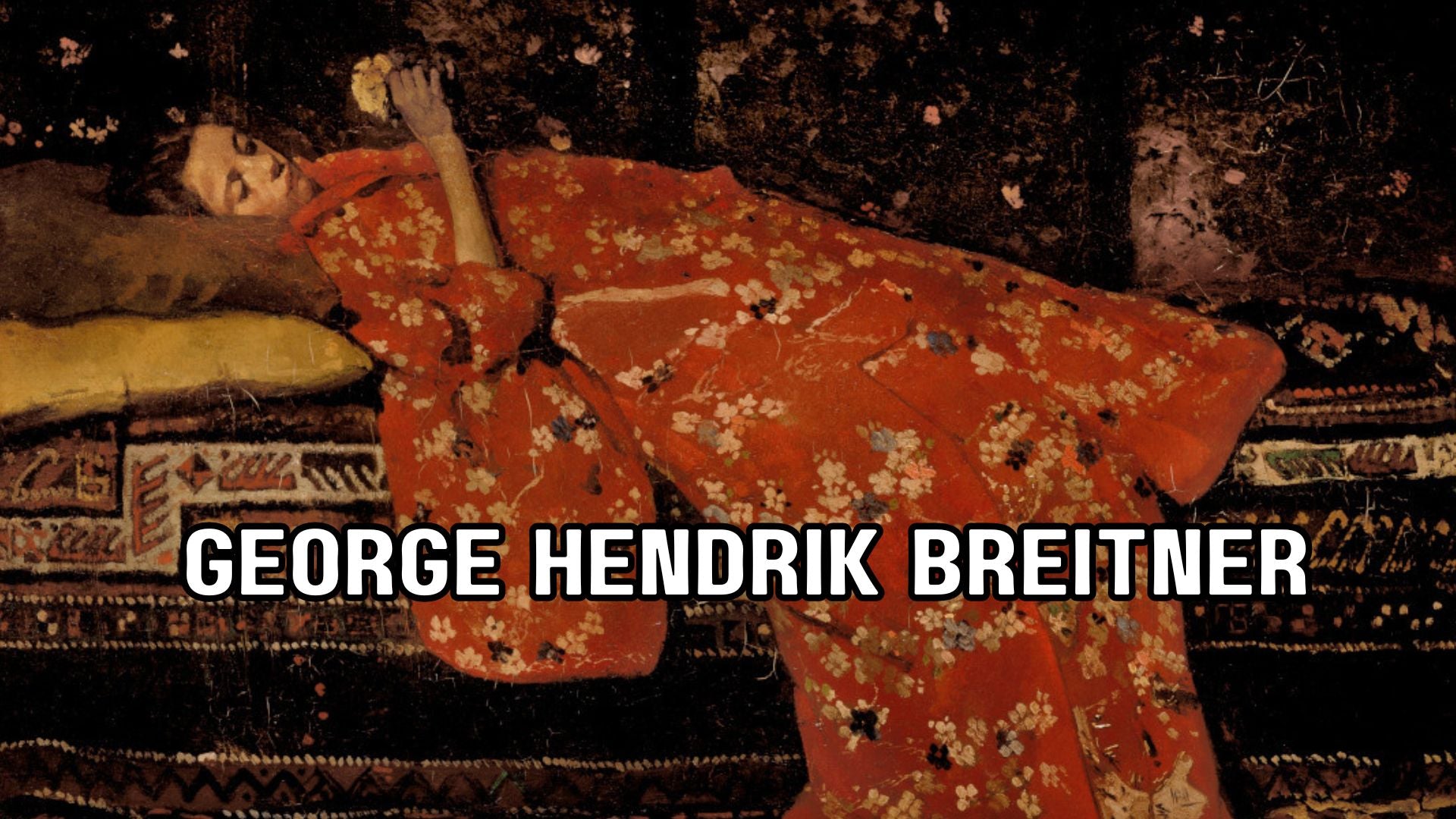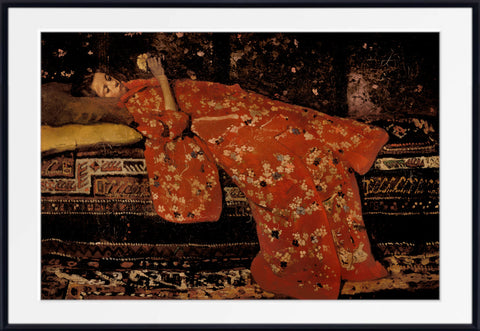Table of Contents:[hide]
George Hendrik Breitner, a prominent figure in Dutch art history, left an indelible mark on the world of painting and photography. His contributions to Amsterdam Impressionism, along with his keen eye for capturing the essence of street life, harbor scenes, and atmospheric effects, have earned him a distinguished place in the annals of art.
Biography
Born on September 12, 1857, in Rotterdam, Netherlands, Breitner displayed exceptional talent from an early age. Despite facing setbacks, such as expulsion from the Art Academy of The Hague for misconduct, Breitner's passion for art remained undeterred. He found solace in painting street scenes, often depicting working-class individuals and everyday life in a realistic style.
Breitner's Artistic Journey
Breitner's artistic journey was marked by significant encounters and collaborations. He crossed paths with renowned artists like Vincent van Gogh, with whom he shared a fascination for capturing the lives of ordinary people. Breitner's preference for cloudy weather conditions and his mastery in portraying movement and illumination in the cityscape set him apart as a pioneering artist of his time.
Breitner's Photographic Endeavors
In addition to his prowess as a painter, Breitner was also a skilled photographer. His photographic works offer a unique glimpse into late 19th-century Amsterdam, showcasing street life and atmospheric conditions that often served as references for his paintings. The discovery of a vast collection of his photographic prints and negatives in 1996 shed light on Breitner's multifaceted artistic talents.
Legacy and Influence
Breitner's legacy extends beyond his artistic achievements. He introduced a sense of social realism to Dutch art, challenging conventional norms and paving the way for future generations of artists. Despite facing criticism from contemporary art critics, Breitner's raw and realistic portrayals found appreciation among fellow artists and art enthusiasts.
Art Market Recognition
In recent years, Breitner's works have garnered significant attention in the art market, with notable pieces fetching substantial prices at auctions. Paintings such as "Girl in a Red Kimono" and "Rokin with the Nieuwezijdskapel, Amsterdam" exemplify Breitner's mastery of color, composition, and subject matter, solidifying his status as a revered figure in Dutch Japonisme and cityscape painting.
Breitner's Enduring Legacy
Breitner's influence continues to resonate in the world of art. The establishment of the Breitner Academie in Amsterdam serves as a testament to his enduring impact on art education and appreciation. His ability to capture the essence of everyday life and urban landscapes continues to inspire artists and art enthusiasts worldwide.
Conclusion
George Hendrik Breitner's artistic legacy transcends time and continues to captivate audiences with its realism, dynamism, and profound insight into the human experience. His contributions to both painting and photography have left an indelible mark on the art world, ensuring that his name will be remembered and celebrated for generations to come.
George Hendrik Breitner Prints and Canvas Panels
Prints and ready to hang canvas panels of George Hendrik Breitner's paintings are available in a range of sizes with fast worldwide delivery.
George Hendrik Breitner FAQ's
-
Who was George Hendrik Breitner?
- George Hendrik Breitner (1857-1923) was a Dutch painter and photographer known for his contributions to Amsterdam Impressionism. He gained recognition for his realistic depictions of street scenes, harbor views, and everyday life.
-
What style of art was Breitner associated with?
- Breitner was associated with Amsterdam Impressionism, a movement characterized by its focus on capturing the fleeting effects of light and atmosphere in urban settings. He painted en plein air, emphasizing spontaneity and realism in his works.
-
What influenced Breitner's artistic vision?
- Breitner drew inspiration from the social realism movement and French writers like Émile Zola, who advocated for depicting the lives of ordinary people. His preference for working-class models and street scenes reflected his interest in portraying the reality of urban life.
-
Did Breitner have any notable collaborations?
- Yes, Breitner collaborated with Vincent van Gogh, with whom he shared a fascination for sketching in the working-class districts of The Hague. While their artistic styles differed, their shared interest in social realism and capturing the essence of everyday life brought them together.
-
What was Breitner's approach to photography?
- Breitner utilized photography as a means of documenting street life and atmospheric effects, which he often used as references for his paintings. His photographic works offer insights into late 19th-century Amsterdam and demonstrate his keen observation skills.
-
Was Breitner's work well-received during his lifetime?
- While Breitner's paintings were admired by artists and art lovers, they often faced criticism from Dutch art critics for their raw and realistic nature. Despite this, he gained recognition both in the Netherlands and abroad for his distinctive style.
-
What is Breitner's legacy in the art world?
- Breitner's legacy extends beyond his artistic achievements. He introduced social realism to Dutch art and left a lasting impact on Amsterdam Impressionism. His works continue to inspire artists and art enthusiasts, and his name remains synonymous with capturing the essence of urban life.
-
Are Breitner's paintings sought after in the art market today?
- Yes, Breitner's paintings have garnered significant attention in the art market, with notable pieces fetching substantial prices at auctions. His depictions of cityscapes and everyday scenes continue to resonate with collectors and art enthusiasts worldwide.
-
What is the significance of the Breitner Academie?
- The Breitner Academie, named after George Hendrik Breitner, serves as a hub for art education and appreciation in Amsterdam. It honors Breitner's contributions to the art world and provides a platform for aspiring artists to explore their creativity.
-
How can I learn more about George Hendrik Breitner and his work?
- You can explore museums, art galleries, and online resources dedicated to Breitner's life and art. Additionally, studying his paintings, photographs, and writings offers valuable insights into his artistic vision and enduring legacy.





